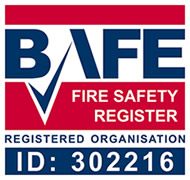DalecUK can provide electrical, fire and emergency lighting testing and certification to ensure you are providing a safe home for your tenants, protecting you from invalidated insurance and claims of negligence.
As a landlord, you have obligations and duties that must be fulfilled in order to keep your home and the tenants residing in it safe. This means that any electrical inspections must be performed, all electrical tests must be undertaken and that you can prove that these have all been completed.
At DalecUK, we work with both commercial and domestic landlords to ensure that their properties are as safe as possible and that all necessary certifications are up to date. We offer an affordable, reliable service and we are dedicated to ensuring that you are completely satisfied with the work we do.
The landlord’s guide to electrical safety.
There is a distinction so far as electrical safety is concerned between the fixed installations (i.e. wiring circuits, switches, sockets, light fittings and circuit boards on the one hand and appliances which can be plugged in and which will often be portable (e.g. refrigerators, electric cookers, kettles, toasters etc on the other).
With rented residential accommodation it is the Landlord’s responsibility to ensure that the electrical installation and appliances provided by the landlord are safe when the tenancy begins and are in proper working order throughout the tenancy. At the start of the tenancy and throughout both must be free of risk of injury to tenants and residents. The local authority can take action to enforce electrical safety in residential accommodation under the Housing Health and Safety Rating System (HHSRS).
The Landlord should carry out a regular basic visual safety check of the electrical installation to ensure that these are safe. This should detect broken items such as sockets and light switches or signs of scorching around the sockets due to overloading or damaged cables etc.
The Institute of Electrical Engineers recommends 10 years as the maximum period between tests of the electrical installation by an electrician but this relates to the period between the initial inspection (when the installation was first installed) and the first periodic inspection/test. Subsequent periods for inspection/tests would depend on the condition of the installation. What the Electrical Safety Council now recommends in this latest Guidance for rented accommodation is that period inspections/tests by a qualified electrician are carried out at least every 5 years or on a change of tenancy. As pointed out above, if the property is a house in multiple occupation of any kind (which will include shared houses) there is a statutory requirement to carry out such inspection/test every 5 years anyway.
The Institute of Electrical Engineers also recommends for residential accommodation that an inspection/test is carried out on a change of occupancy. These are inspections/tests by a qualified electrician.
The Electrical Safety Council Guide says that where a change of tenancy occurs within a short period (for example not more than 6 months) a full inspection/test may not always be required. However, it is imperative that a landlord’s representative carries out a visual electrical safety inspection prior to reletting. This should undertake a manual test of any residual current devices.
As an alternative to a full test/inspection the Guide suggests a visual condition report, also carried out by a qualified electrician. However a visual condition report is only suitable where the installations have been inspected and tested in the last two years and the result was satisfactory or any resulting defects have been rectified.
If the property is a house in multiple occupation then the Management Regulations require the manager to take safety measures and to maintain electrical installations. Very importantly for all HMOs (not just licensable HMOs) there is an obligation to have fixed electrical installations in every HMO inspected and tested at intervals not exceeding 5 years by a qualified electrician. A certificate must be obtained. The local authority can require a certificate to be produced in 7 days if they ask.
Fire alarm systems need to be regularly tested. The routine tests which are to be carried out frequently do not require specialist knowledge and can either be carried out by the landlord or the tenant. It is essential that a log book record is kept. If the tenant is to be responsible for testing, the landlord must instruct the tenant as to what must be done and periodically check the situation to see if everything is being done (e.g. by checking the log book).
In the case of houses in multiple occupation (i.e. all HMOs; not just licensable HMOs) the landlord is obligated under the management regulations to ensure that fire alarms are in proper working order.
The testing/maintenance requirements vary according to the type of system (Grade A or Grade B).
Routine testing – at least one detector or call point in each zone should be tested weekly.
Routine inspections/maintenance – A six monthly service should be carried out by a specialist alarm engineer. This is a full test.
Note: in the past the suggested frequency for such tests was 12 months but the latest guidance is now that these tests should be carried out every 6 months in the case of Grade A systems.
Grade B systems are interlinked systems where there is no control panel. These systems should be tested at least once a week by operating all the fire alarm devices. For smoke alarms and heat detectors this can be carried out by use of a test button on each of the alarms.
Routine maintenance – these require periodic cleaning in accordance with the manufacturer’s instructions.
Routine inspections – a routine check must be carried out by a qualified electrical every 12 months.
Emergency Lighting
These will require periodic inspection by a qualified electrician in accordance with the manufacturer’s recommended frequency.

Dalec UK Ltd
Address: Keighley BD21 2JA
Phone: 01535 606006
Providers of Alarm Systems, CCTV Systems and Fire Alarms.



Find Us





